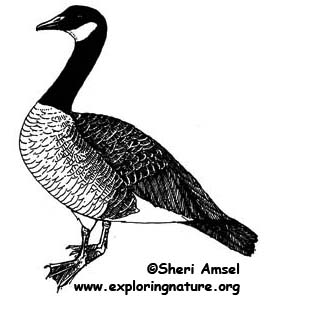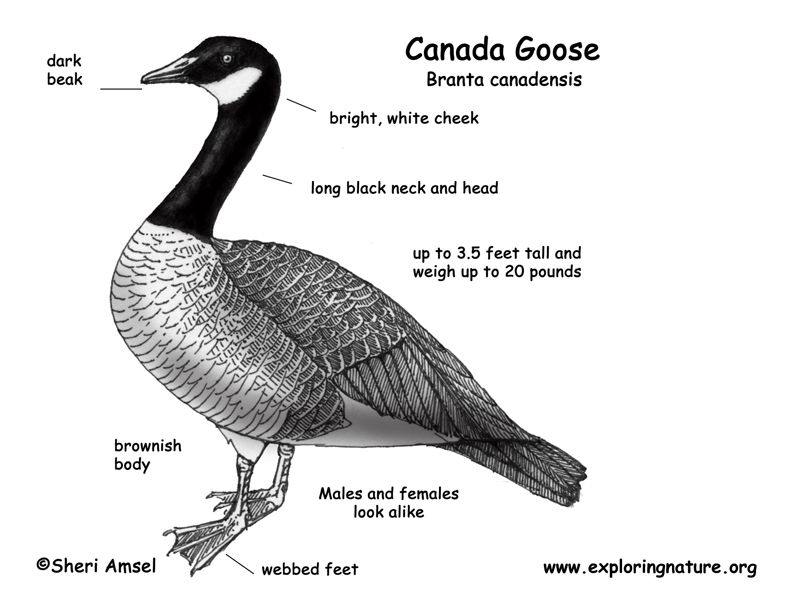

In the summer, they are as far north as southeastern Alaska, across Canada to the western edge of Greenland and south to the U.S. They winter from southern Canada to the southern U.S. and Mexico.
They are found in open fields, city parks and golf courses near water. They nest by rivers, lakes, streams and in marshes.
They are a big bird with a brownish body, a long black neck and head and bright, white cheek patch. They can be up to 3.5 feet tall and weigh up to 20 pounds. Males and females look alike.
They gather in large flocks to fly south in the fall in a V-shaped form in the sky. They often honk while flying overhead. They reverse this in the spring as they move north to breed.
They eat plants, berries and grain left over in farm fields.
They nest on the ground near water. They make a large, open cup nest of grass and moss and lined with their own soft goose down. Females lay 2-8 white eggs.
Kingdom: Animalia
Phylum: Chordata
Subphylum: Vetebrata
Class: Aves
Order: Anseriformes
Family: Anatidae
Genus: Branta
Species: B. canadensis
When you research information you must cite the reference. Citing for websites is different from citing from books, magazines and periodicals. The style of citing shown here is from the MLA Style Citations (Modern Language Association).
When citing a WEBSITE the general format is as follows.
Author Last Name, First Name(s). "Title: Subtitle of Part of Web Page, if appropriate." Title: Subtitle: Section of Page if appropriate. Sponsoring/Publishing Agency, If Given. Additional significant descriptive information. Date of Electronic Publication or other Date, such as Last Updated. Day Month Year of access < URL >.
Amsel, Sheri. "Goose (Canada)" Exploring Nature Educational Resource ©2005-2024. December 13, 2024
< http://exploringnature.org/db/view/185 >


